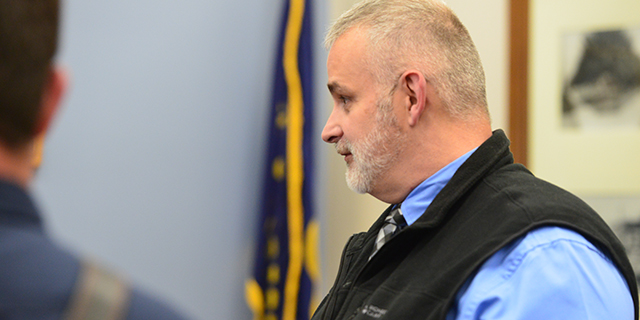COVID-19 numbers shooting up; most counties would be at ‘extreme’ risk level
Published 9:00 am Wednesday, August 4, 2021

- The late afternoon sun bathes fans in the grandstands Saturday, July 10, 2021, at the Pendleton Round-Up Grounds during the Pendleton Whisky Music Fest. An outbreak of COVID-19 cases is believed to stem from the concert, which was attended by 12,000 people.
SALEM — The faster, stronger delta variant of the virus that causes COVID-19 is setting record numbers of infections and sickness across Oregon, state statistics for the most recent two weeks show.
Trending
In Wallowa County, 1 out of 4 people tested for COVID-19 was positive.
Umatilla County had 915 cases per 100,000 people, by far the most in the state, while Union County has 622 cases per 100,000.
Multnomah County, the state’s most populous, reported 1,013 new cases over the two-week time frame, its shallower rise still driving big total numbers.
Trending
Lake County was the only one of Oregon’s 36 counties to record a drop in reported cases.
The numbers were contained in the weekly County COVID-19 Community Spread Report, the document whose arrival each Monday once meant Gov. Kate Brown would reassign new risk levels based on the prevalence of COVID-19 within county boundaries.
Where a county fell on the risk chart determined what businesses could be open, how many customers could be in a store, how late a bar could stay open and whether a diner could sit down for a meal or had to buy takeout.
The measures of total cases, cases per 100,000 population and percentage of tests that were positive, controlled Oregon residents’ lives for much of the past fall, winter and spring.
With the steep drop in the infection rate as a majority of Oregonians started getting vaccinated, Brown unshackled the fate of local lives and economies from the weekly report’s ups and downs. On June 30, Brown handed over control of public health decisions to counties.
The weekly reports continue to come out, though the Oregon Health Authority delayed delivery of the numbers this week by a day. If the list still carried its restrictions, 22 and likely more of Oregon’s 36 counties would be under the “extreme” risk level, which carried the highest restrictions.
In early July, Oregon showed a seven-day average of 110 new cases in the whole state. It had not been so low since early June 2020 when the pandemic was still in its early days.
There would be four waves of infection by the beginning of this summer. But the arrival of vaccines seemed to guarantee the dark days of winter, when the seven-day average topped out at 1,515 new cases, were gone forever.
Now, Oregon is back to wintery numbers of infections, and hospitals are again stretched to the limit. A saving grace is that most of the most vulnerable — the very elderly and those with serious medical conditions — have had access to vaccinations. That has made the wave of deaths that once followed after reported infections and hospitalizations shallower and shorter.
Brown’s decision to lift restrictions on June 30 when the state closed in on vaccinating 70% of eligible adult residents came as new infections were at their lowest levels in more than a year. But just as the state opened up, the delta variant arrived in force. In areas of the state with large numbers of unvaccinated people , it wreaked immediate havoc.
OHA is investigating the role of the Whisky Fest country music concert in Pendleton last month that drew 12,000 and has led to dozens of reported positive cases of COVID-19, primarily in Umatilla County. The specter of a superspreader event now shadows plans for the Umatilla County Fair Aug. 11-14. That’s dwarfed by the Pendleton Round-Up, beginning Sept. 11, which in the past has drawn up to 50,000 people from across the United States.
The OHA investigation also underlines a structural problem with the state’s plan to have local authorities enforce the rules. Public health officials are hired by local government officials. The officials are elected by local voters. In areas where vaccination rates are low, including much of Eastern and Southwestern Oregon, there is still doubt — and sometimes outright hostility — toward any restrictions such as mandatory masks.
Umatilla County Public Health Director Joe Fiumara told the East Oregonian this week that he expects COVID-19 cases to rise because of the county fair.
“If you’re trying to reduce cases, I think canceling the fair would be a way to do that,” Fiumara said. “And I think it would be an effective way to prevent additional spread.”
But Fiumara said he would not formally recommend cutbacks or closing the event because of the backlash that would ensue.
“I’m not sure all the fallout from canceling it would be worthwhile. I think there would be a lot of pushback,” he said.
For her part, Brown and her administration have put the focus back on counties, many of which had clamored for 18 months for more local control.
While other states and cities are pushing for mandatory rules, Oregon’s mask-wearing warning is voluntary. The state has issued a requirement that workers and visitors to state buildings must wear masks.
After a second mandate following CDC guidance to require masks in schools, Brown got a taste of blowback over the past few days as schools boards and parents pushed back.
Instead of waiting for the state to impose new sanctions, Brown has said localities should step up, “follow the science” and take action themselves.
“While we have learned not to rule anything out, we also know that locally-driven response efforts are most effective at this stage in the pandemic to reach unvaccinated Oregonians,” said Brown spokesperson Charles Boyle on Tuesday, Aug. 3.
Boyle said nothing is stopping locals from acting — and the state is ready to help with materials such as vaccines and public health workers — to make any action a success.
“Counties, cities and employers also have the ability to institute their own safety measures and requirements, and we expect local leaders in areas most impacted by COVID-19 to take action,” Boyle said.








